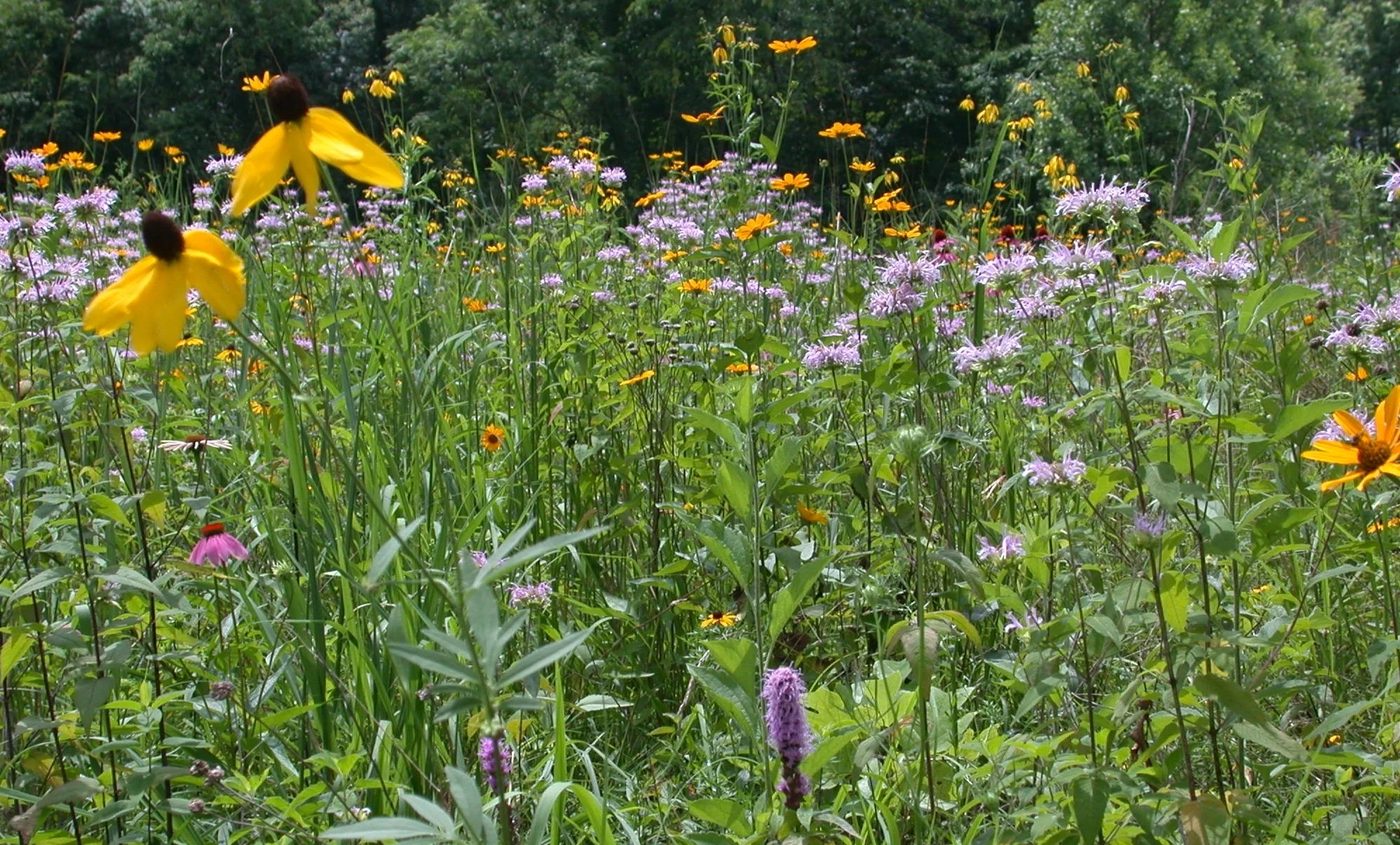photo courtesy of Eco Logic
Why Natives?
THE IMMEDIATE BENEFITS. Because they evolved right here in the lower Midwest, our native plants are perfectly suited to our local growing conditions, making them tougher, less water-dependent, and lower maintenance than non-natives. Planting natives helps you do your part to clean the air and water. Natives' deep root systems store water, sequester carbon, and build topsoil. And don't forget their surprising beauty: native plants give a rich, textured, natural look to your landscaping, often lending interest across all four seasons.
THE BIGGER PICTURE. A plant is a plant is a plant, as Gertrude Stein might have said, right? Well, actually, no. Ecologists tell us that the plants we choose for our yards make a huge difference, not just for the wildlife around our homes, but for the larger ecosystem as well. The ecological reasons may surprise you...
WHAT'S A NATIVE, ANYWAY? The birds and butterflies we want to see in our yard don't appear there by magic. They come because they are seeking food, nesting sites, and shelter. If they don't find them, off they go, sometimes permanently. The problem is really quite simple: a great many of the nice ornamental plants that we plant these days don't offer many of these wildlife benefits. This is because they evolved on other continents, completely apart from the wildlife evolving here in the Midwest. In fact, that's the very definition of a native plant: a plant that was here before 1492, when Europeans first began bringing alien species to these shores.
DEFINING THE PROBLEM FURTHER. The problem gets worse. Many of these alien plants are considered invasive, meaning they escape from our yards and then aggressively and opportunistically crowd out the native plants that our wildlife depends on. Asian honeysuckle, Bradford pear, and burning bush may look nice, but they are rapidly depleting our biodiversity and creating monoculture ecological deserts. They may seem harmless, but in fact they are contributing to an environmental nightmare.
At Deep Roots, we worry about these things. The science is clear: as human development (and invasive species) shrink the biodiversity in our natural surroundings, native wildlife loses its habitat, which can lead to isolation, local extinction, and even complete extinction. But the science is also clear that solutions do exist. This is where you as a homeowner come in: if we Americans were to turn our vast expanses of urban and suburban yards into native habitat, even partially, we would build the connected ecosystems that just might be the only chance many species have of survival.
IT'S ALL ABOUT BUGS. Here's where it gets really interesting. The godfather of the native plant movement, Dr. Doug Tallamy, is in fact an insect specialist. Two decades ago, he made the ground-breaking discovery that the key to the problem is the very insect life that most of us gardeners have always reviled. It turns out that it's a good thing to have bugs in your yard (not Japanese beetles, of course, but native bugs). Only then can the birds and other desirable wildlife that depend on them flourish. And the insects will only be there if there are plants they can eat, i.e. native plants that have co-evolved with those insects for millions of years to form intricate and mutually-dependent relationships. It's the complex web of life right under our noses.
We could go on and on. For instance, 90% of plant-eating insect species are plant-specific, meaning they can only eat one or two plant families. If those species aren't in your yard, those insects won't be either, nor the butterflies they might become, nor the birds that depend on them. Similarly, while birds may seem to dine happily on berries and seeds, we often forget that to rear their young in the spring, they require insects, not fruits.
IT DEPENDS ON US. So when you plant native plants in your yard, be they trees, shrubs, grasses, ferns, or perennial flowers, you are in effect feeding an entire chain of wildlife. That wildlife will reward you with the sights and sounds we all long for in our yards, as if thanking you for contributing to their species survival. That's bringing nature home.
MORE RESOURCES. If you're intrigued by all this, we strongly recommend Doug Tallamy's books, Bringing Nature Home and Nature’s Best Hope. Check out our Resources page as well!
Thanks for giving Deep Roots Landscape Design, and our native Hoosier wildlife, a chance!


